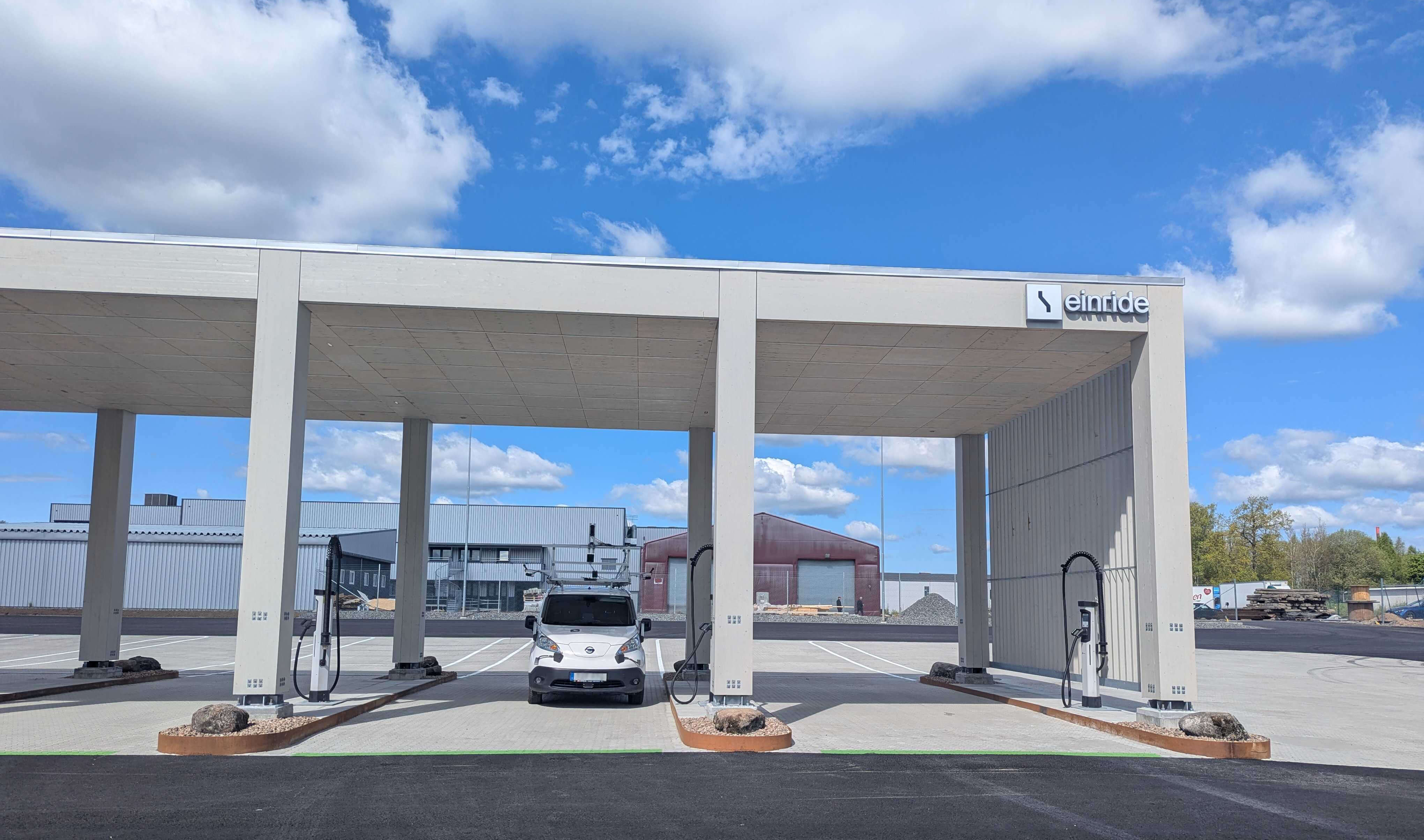Shifting Left with Simulation: Accelerating Safe and Scalable Autonomous Freight
This blog post describes how Einride Autonomous leverages simulation as a core enabler of shift-left testing to accelerate the safe and scalable development of autonomous freight technology. It highlights the integration of simulation across the development lifecycle—from CI to virtual release tests—emphasizing its role in shortening feedback loops, validating safety assumptions, and building trust in virtual testing.

At Einride, we’re on a mission to transform freight—sustainably, intelligently, and safely. As part of this journey, we continuously aim to shift left: conducting testing activities earlier in our development cycle to increase development velocity, shorten feedback loops, and reduce the time it takes to bring innovation to market.
Simulation as a Shift-Left Enabler
Simulation plays a pivotal role in this shift—giving our engineers accessible, cost-efficient test beds and powerful tooling, ultimately accelerating our ability to learn fast, test bold ideas, and validate critical safety assumptions. But testing early is not just about quality assurance—it’s about building incremental evidence for our safety case throughout the development lifecycle. As we scale our operations and products, this proactive approach becomes increasingly critical.
Our development process blends Agile methodologies with the rigor of the V-model, striking a balance between fast iteration and structured validation. Simulation bridges this hybrid approach by offering a continuous feedback mechanism. It empowers teams to move quickly without compromising the traceability and assurance required for safety-critical systems.
From Containerization to Virtual RAT
From a technical perspective, a foundational enabler has been our early investment in containerizing our Autonomous Driving Stack (ADS). This makes it possible to run the exact same stack on our AVs, in the cloud, and locally on developer machines. Developers can mirror real-world environments, experiment safely, and receive immediate feedback, no matter where they’re working. This aligns tightly with our goal of shortening feedback loops and encouraging early testing.
Simulation also allows us to introduce faults and design edge-case scenarios, as these kinds of situations are difficult and unsafe to test in the real world. Stress testing our system helps us explore its limits and design for robustness. In addition, we gather real-world data from our test vehicles to recreate operational sites virtually, enabling us to build and run realistic scenarios using the latest version of our ADS stack, well before real-world deployment.
Before any customer deployment, we visit the site with our test vehicles to map the environment and collect high-resolution vehicle and sensor data. This data is then fed into our internal pipeline to generate virtual maps—accurate digital twins of the operational sites. These maps enable us to validate the current version of our ADS stack under realistic, customer-specific conditions, well ahead of actual deployment.
As we incorporate Generative AI into our tooling, we’ve seen its potential to enrich simulation by augmenting scenario libraries. This enables the creation of diverse variations of both edge and nominal cases at scale, supporting broader coverage and continuous validation, particularly for learning-based systems and evolving MLOps pipelines. We’re continuously exploring how Generative AI can further enhance our workflows and increase engineering efficiency across the development cycle.

Fidelity, Feedback, and Trust
Achieving value from simulation depends heavily on fidelity. Modeling the vehicle, its dynamics, sensors, and the environment demands both mathematical precision and real-world calibration. It’s a continuous effort: comparing simulation outcomes to real-world data, fine-tuning the models, and improving realism so that results are trustworthy and actionable. To support our engineers and scale this capability across teams, we’ve implemented tiered simulation layers that run at different frequencies and fidelity levels. Lightweight CI scenarios execute on every code push, validating fundamental aspects of our stack and ensuring regressions are caught early. Nightly suites explore a broader set of domains to validate end-to-end system stability. And every other week, we run a Virtual Release Acceptance Test (vRAT), where we execute scenarios directly tied to formal verification activities defined by our system engineering team. These scenarios are traceable to system-level requirements and act as a virtual counterpart to our physical Release Acceptance Test (RAT), which runs on our test track. Over time, our goal is to increase reliance on virtual testing, reducing the need for extensive physical tests without compromising safety.
For every vRAT and physical RAT, we collect detailed vehicle and sensor logs to analyze outcome differences, compare real vs. simulated behavior, and evaluate the fidelity of our virtual models. This correlation work is vital for building trust in simulation as a verification tool—and it’s a continuous process of calibrating and validating our models to ensure simulation results remain actionable and predictive.
In summary, we’ve embedded simulation across our development pipeline with increasing level of fidelity:
- CI scenarios run automatically on each code push, verifying core systems behavior and catching regressions early.
- Nightly simulation suites cover broader domains to validate overall system stability and integration.
- Virtual Release Acceptance Tests (vRATs), executed biweekly, are directly traceable to formal system requirements and serve as a virtual complement to physical testing.
Looking ahead
Simulation at Einride is not just a tool—it’s a foundational part of how we build technology that is safe, scalable, and future-ready. It allows us to move faster, make better decisions, and build confidence in our system—every step of the way.
This is just the beginning. As we advance the state of autonomous freight, simulation will remain key to bridging innovation, safety, and scale.
